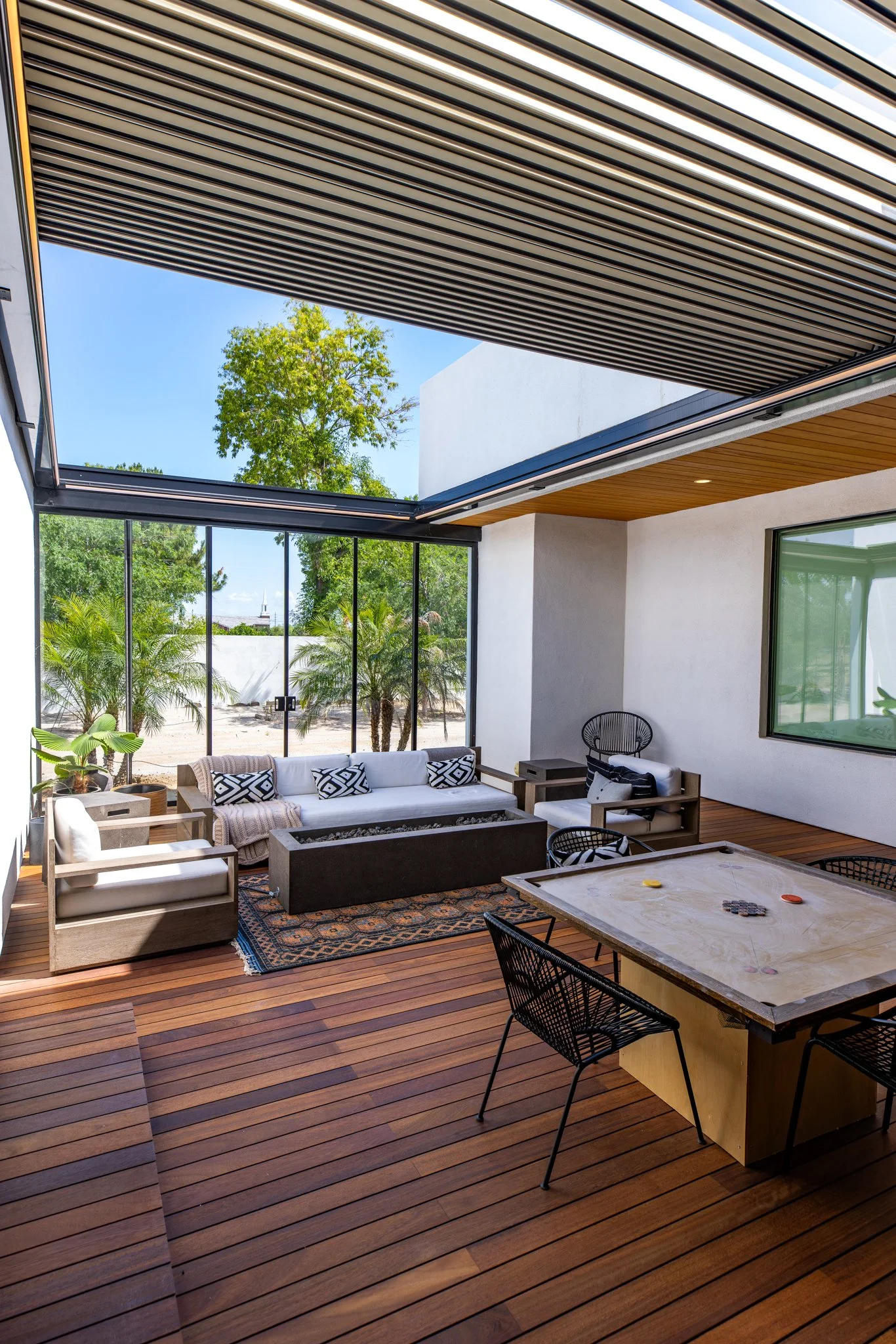
AdapTive Envelope
Funding & Phased Deployment
Smart financing. Strategic rollout. Seamless execution.
AdapTive Envelope projects can be staged by phase, zone, or fiscal cycle — so you can activate priority areas now, align spend with budgets, and start ROI earlier.
Prefer a quick conversation? Request a 15-min funding & phasing brief.
AdapTive Envelope — Designed for Flexibility. Built for comforT.
Each AdapTive Envelope SysTems package is structured for both design and financial flexibility. Whether it’s a single patio cover or a multi-zone resort masterplan, each scope can be funded, fabricated, and delivered in deliberate stages. This protects capital, maintains cash flow, and allows guest-ready comfort zones to open earlier for measurable ROI.
Funding Models
Choose the path that fits your project scale and approval process. Each option aligns spend with documented progress — from schematic design through commissioning.
- 10% — Design & Engineering: site capture, schematics, coordination, preliminary drawings.
- 40% — Fabrication Release: finish approvals, production slot, material procurement.
- 50% — Shipment / Delivery: crating, freight, staging; due before shipment or on-site delivery.
Keeps early-stage risk low while fully funding build and logistics.
Shipping lead time typically runs 10–12 weeks after final design approval. Installation timelines vary by scope and phasing.
Phasing Models
Sequence construction around seasons and events so revenue continues while comfort expands.
-
Impact-FirstPhase StrategyActivate the most visible, highest-ROI zones first — rooftop bars, dining patios, or pool decks — to prove value early and build momentum.
-
Ring-ExpandPhase StrategyBegin with a central hub and extend comfort outward as usage data supports growth. Ideal for masterplans with evolving activation zones.
-
Dual-TrackPhase StrategyDevelop two high-impact areas simultaneously — one guest-facing, one back-of-house — to maximize operational continuity.
-
Seasonal OffsetPhase StrategySchedule construction windows during low-season or shoulder-season periods to keep core guest operations running smoothly.
-
Pilot-ProvePhase StrategyDeploy a single adaptive-zone pilot to capture guest feedback and operational insights before expanding property-wide.
-
Continuous ActivationPhase StrategyOverlap design, production, and installation phases across zones to maintain continuous activation and measurable ROI at every stage.
Scale with Precision and Control
From single-site pilots to full national coordination, each deployment model preserves design intent while adapting to operational realities.
Single-Site Deployment
Ideal for flagship or pilot locations. Each system is engineered and delivered as a complete adaptive module with site-specific coordination and dedicated project management.
Regional Program
Multi-property rollouts share standardized detailing and logistics. Fabrication schedules stay synchronized, ensuring brand consistency across every site in the region.
Portfolio Integration
AdapTive Envelope packages can be embedded within prototype drawings or brand standards—streamlining specification, bidding, and deployment for future projects.
Staged Logistics
Align shipments to phase timing and installation sequence to keep rooftops, courtyards, and limited-access sites running efficiently during active operations.
Turnkey Partner Delivery
Certified partners handle cradle-to-completion management—from permitting and foundations to electrical routing and final integration—for a unified delivery experience.
National Coordination
Centralized fabrication and partner oversight across states and regions ensure identical quality, comfort, and style wherever the brand expands.
Tailored Design — 10 / 40 / 50
Fixed milestone draws for custom projects. Percentages apply to contracted scope; tuning occurs only if scope changes.
Pre-Design
ROM pricing, site capture, and preliminary options. Hourly or quoted; not part of the 10 / 40 / 50 schedule.
Design & Engineering Deposit
Schematics, coordination, and submittals confirming the project scope and aesthetic intent.
Fabrication Release
Finish approvals, production slot assignment, and material procurement for all specified systems.
Shipment & Delivery Balance
Crating, freight, staging, and onsite delivery. Includes installation coordination and commissioning.
Multi-zone programs can stagger Phases 2 and 3 by area to keep cash draw balanced. For Fabrication Ready scopes, use a simplified 50 / 50 (deposit / pre-shipment) schedule.
Procurement Controls & Price Protection
Guard the budget, keep schedules on track, and maintain visual consistency across phases.
Sample Roadmap
AdapTive Envelope programs scale easily—from a single pilot zone to multi-site rollouts. This roadmap shows how phased comfort investments evolve into long-term asset upgrades.
Phase 1 — Pilot Zone (0–3 months)
Launch the first AdapTive Envelope zone at a high-visibility area such as a rooftop, patio, or main courtyard. Capture usage data, guest response, and ROI metrics to validate impact.
Phase 2 — Expansion Planning (3–6 months)
Use pilot performance data to refine design standards and ROI modeling. Approve multi-zone scope for parallel procurement and sequencing.
Phase 3 — Multi-Zone Rollout (6–12 months)
Deploy additional systems in a coordinated schedule to maintain service continuity during installation. Lock pricing early to protect margins.
Phase 4 — System Integration & Optimization (12+ months)
Network multiple AdapTive Envelopes under unified automation. Optimize energy, comfort, and maintenance for maximum return per square foot.
Each roadmap is tailored to your goals. Start small, scale strategically, and convert comfort into predictable year-round performance.
Frequently Asked Questions
Quick answers about weather performance, timelines, ROI, and how an AdapTive Envelope fits your project.



